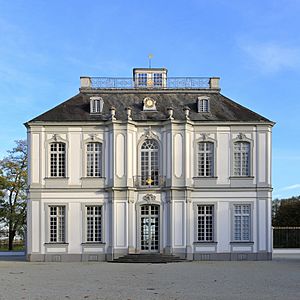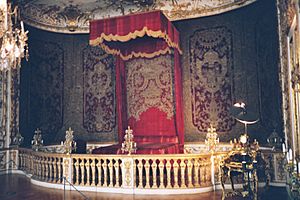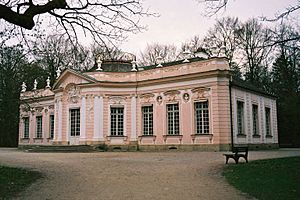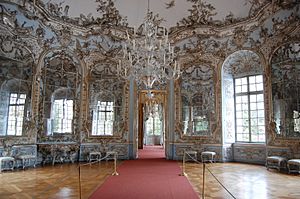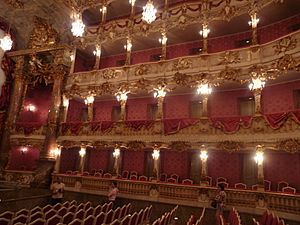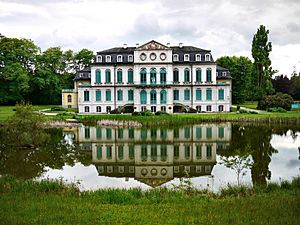François de Cuvilliés facts for kids
François de Cuvilliés, sometimes called the Elder, was a famous architect and designer from Belgium. He was born on October 23, 1695, in Soignies and passed away on April 14, 1768, in Munich, Germany. He is known for bringing the beautiful Rococo style of art and design to the royal court in Munich and to many other parts of Central Europe.
Life and Career
François de Cuvilliés was quite short. Because of this, he first caught the eye of Maximilian II Emanuel, Elector of Bavaria, who was a ruler living in exile at the time. The Elector noticed Cuvilliés's talent and arranged for him to study mathematics. Later, he paid for Cuvilliés to train with another architect, Joseph Effner. From 1720 to 1724, Cuvilliés went to Paris to learn more about design. When he came back to Munich, he became the official architect for the royal court, working alongside Effner.
After the Elector passed away in 1726, Cuvilliés worked for a while at Schloss Brühl for the new Elector's brother, Clemens August of Bavaria. He created designs for the chapel there (1730–1740) and for the hunting lodge called Falkenlust (1729–1740). When the new ruler, Charles Albert, focused more on Munich, Cuvilliés returned there too.
His reputation grew in Munich thanks to his designs for the "Reiche Zimmer" (Rich Rooms) in the Munich Residenz. These rooms had been damaged in a fire. Cuvilliés was asked to design new wooden panels for the interior. These were made by the court's best carver, Joachim Dietrich. The designs included four gilded Rococo tables with playful dragon shapes.
Cuvilliés's most famous work is the Amalienburg, a small palace built from 1734 to 1739 in the park at Nymphenburg Palace. It features silver and gold Rococo decorations against colorful backgrounds. His style is known for being very detailed and sometimes quite elaborate. He designed many things, including mirrors, tables, stair railings, ceilings, and fireplaces. He also designed furniture like beds and chests of drawers.
The Cuvilliés Theatre (1751–1755) was another masterpiece designed and built by Cuvilliés for Elector Max III Joseph. Even though the theater was bombed during World War II, its carved and gilded boxes had been taken apart and stored safely. Because of this, the theater was carefully rebuilt in the 1950s.
Cuvilliés wrote several books about art and design. His son, François de Cuvilliés the Younger, edited these books and later took over his father's role at the Munich court. Starting in 1738, Cuvilliés began publishing many engravings of his designs for wall panels, decorative moldings, furniture, and ironwork. These were printed in Munich and sent to Paris and other places, helping to spread the Rococo style across Europe.
Main Works
Here are some of François de Cuvilliés's most important projects:
- Augustusburg and Falkenlust Palaces, Brühl (World Heritage Site) (1728–1740)
- Upgrading parts of the Munich Residence (1730–1737), including building the Cuvilliés Theatre (1750–1753)
- Palais Holnstein in Munich (1733–1737)
- Amalienburg in the park of Nymphenburg Palace (1734–1739)
- Schloss Haimhausen (1743–1749)
- Schloss Wilhelmsthal in Calden near Kassel (1744)
- The front of the Theatine Church, Munich (1768)
François de Cuvilliés the Younger
François de Cuvilliés had a son, also named François de Cuvilliés (born October 24, 1731, in Munich; died January 10, 1777, in Munich). He was also an architect and helped his father. After his father's death, he became a lead builder for the royal court in Munich. At first, his work was in his father's Rococo style. However, he later moved towards the Neoclassical style, which was a new trend at the time.
See also
 In Spanish: François de Cuvilliés para niños
In Spanish: François de Cuvilliés para niños


